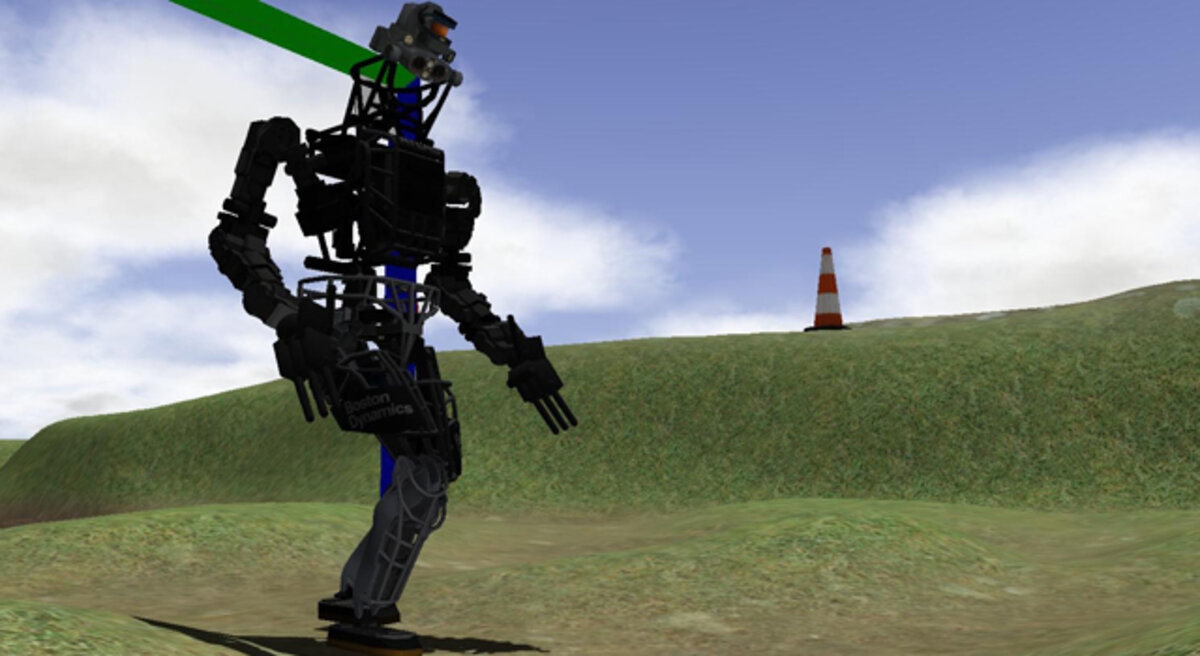The ultimate video game: Teams compete in DARPA Robotics Challenge
Loading...
This is the ultimate video game.
Except in this game, turning on a garden hose is an enormously difficult task, requiring huge teams of scientists and decades of acquired technology.
About 26 teams from eight countries competed June 17-21 in the Virtual Robotics Challenge, the first round of the DARPA Robotics Challenge, using complex software to direct virtual robots in a cloud-based simulator that looks like a 3-D video game.
The overall challenge for the teams is to develop software that can operate a (Defense Advanced Research Projects Agency) across a low-bandwidth network, which is expected to be the only type of network available to first responders in a disaster scenario.
This first round was a software competition in which teams used software of their own design to have a simulated ATLAS robot navigate a simulated disaster zone that looked something like suburbia gone wrong. For three days, competitors stared into computer screens in their respective far-flung labs and offices, instructing their virtual robots to complete a series of challenges, including driving a vehicle and walking over uneven ground. Robots also had to pick up a hose, connect it to a spigot, and turn it on.
“The disaster-response scenario is technically very challenging,” said Russ Tedrake, a professor in the electrical engineering and computer science department at the Massachusetts Institute of Technology (MIT). “It requires the robot and human operator to simultaneously perceive and gain an understanding for , and then use that information to perform difficult manipulation tasks and traverse complex terrains.”
That means that the virtual robot must feed its raw sensor data back to its operating team, which then, with the help of the robot, must interpret its surroundings and enter instructions about where to move or how to manipulate objects. The team members then continuously asks the robot to share its plan, adjusting their requests and their suggestions until the robot provides a correct answer, at which point the robot is allowed to go on autonomously.
The top nine teams received funding and an ATLAS robot to compete in the DARPA Robotics Challenge Trials in December 2013. The trials are the second of three DARPA challenge events and will be the first time that the physical robots will compete.
The overall winner of the first round was the Florida Institute for Human and Machine Cognition, a team of some 22 researchers.
“Getting in the car and driving was ,” said research scientist Jerry Pratt, the Florida Institute’s team leader. “Walking – we had that nailed.”
Other winners included Worcester Polytechnic Institute, MIT, and TRACLabs. The Jet Propulsion Laboratory, which was also among the winning teams, to three runner-up teams that DARPA had not originally selected – it had chosen six teams – putting the total to nine teams that will compete in the second round.





